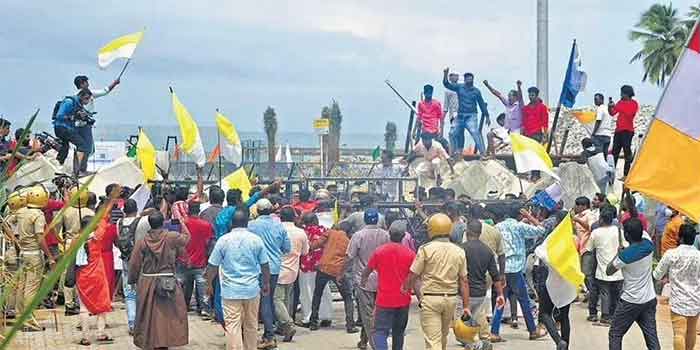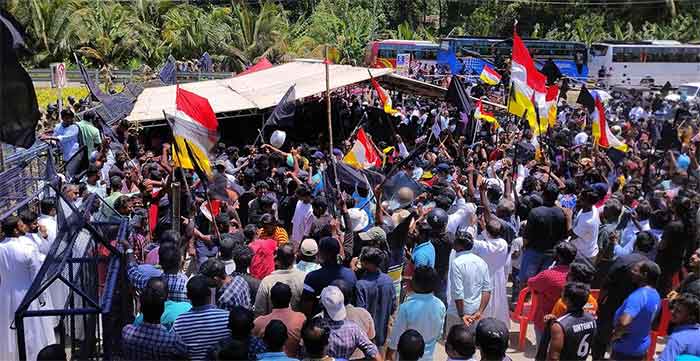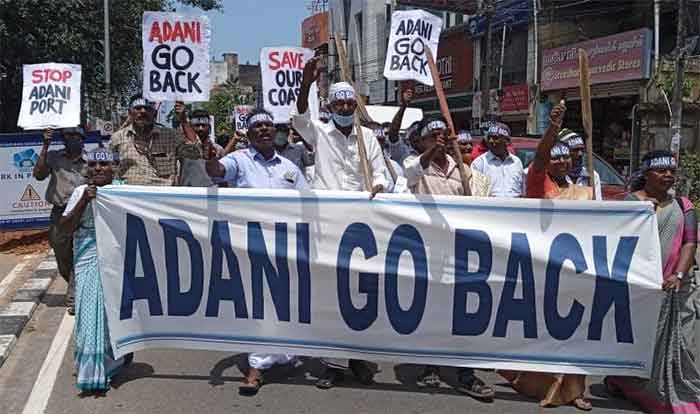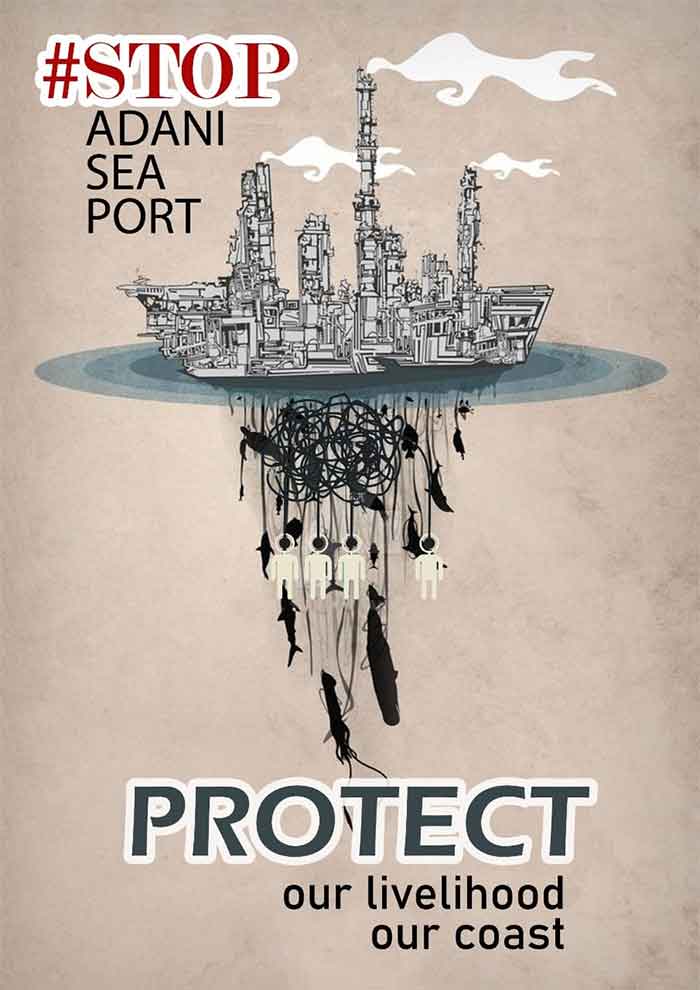
To
Smt Nirmala Sitharaman
Union Finance Minister
Dear Smt Sitharaman,
The Vizhinjam Port project being set up in Kerala as a “Landlord PPP” project involves partial financial support from the Centre towards “Viability GAP Funding”, in accordance with the PPP format developed by the erstwhile Planning Commission.
The Kerala State Govt, after inviting bids from prospective promoters for the PPP project and evaluating the same, selected M/S Adani Ports & SEZ Ltd. as the group to implement the project, subject to a grant of Rs 1635 Crores to be given to the group to cover the “viability gap”, as per the terms of the bid. The grant would be shared by the State and the Centre in equal proportions, according to the PPP scheme approved by the Centre (https://www.vizhinjamport.in/)
It is reported that your Ministry has recently issued final clearance for the project for releasing a grant of Rs 818 Crores towards its share (https://infra.economictimes.indiatimes.com/news/ports-shipping/centre-gives-final-nod-for-viability-gap-funding-to-adanis-vizhinjam-port-project/95271745)
I am not sure whether your Ministry has seen a detailed report prepared by the Comptroller & Auditor General (CAG) on this project (Audit Report No.4 (PSUs) for the year ended 31 March 2016).
The CAG had audited the project w.r.t the following two aspects:
- “Whether the tendering process was competitive, equitable, fair and transparent; and
- Whether the key clauses of the concession agreement were drawn up in such away as to allocate risks and benefits between the Concessionaire and GoK in a balanced manner“
With reference to each of these issues, the findings of the CAG were quite disturbing. Some of the CAG’s observations are extracted below.
“According to the guidelines issued by the Central Vigilance Commission (CVC), prequalification criteria (PQ) should be framed with a view to attracting participation of reputed and capable firms with proper track record. Therefore, the PQ criteria should be exhaustive, yet specific and unambiguous. We noticed deviations from these guidelines” (Para 3.1.8)”
“VISL changed the entire structure of the project after pre-qualifying five bidders. The changes were made on the adoption of Model Concession Agreement (MCA) for State Ports issued by the Planning Commission of India and were intended to make the project more attractive to private investors. As the changes were not incorporated in the RFQ/DPR/Master Plan made available to prospective investors at the RFQ stage, unfair advantage was given to the qualified bidders. We observed that by incorporating major changes in the project parameters after shortlisting the bidders, GoK/VISL had violated the spirit of the MCA in which it was stated that ‘All project parameters such as concession period, tariff, price indexation and technical parameters should be clearly stated upfront’ ” (Para 3.1.8.1)
“it could be observed that in spite of 67 per cent investment by the GoK, the NPV of its investment in the project is (-)`3,866.33 crore and at the same time the NPV of the investment accrued to the Concessionaire for the 40 year period with 33 per cent investment is `607.19 crore. Further, ENPV18 and EIRR from the project is (-)`834.60 crore and 8.9 per cent respectively. Therefore, the financial benefit accruing to the State is not commensurate with its investment” (Para 3.1.6)
“The standard concession period for PPP projects is 30 years. This was also fixed as the base concession period for projects with private participation in the policy on Ports and Shipping Development approved in 2005 by GoK. Further, in the study report on the Vizhinjam project by the International Finance Corporation (IFC), the Concession period was recommended as 30 years and the concession period was specified as 30 years in all the three tenders issued for the Vizhinjam project prior to the 2013 tender. In the current agreement, however, the concession period was fixed as 40 years. By allowing 10 years extra concession period, the Concessionaire would be collecting additional revenue of Rs 29,217 crore” (Para 3.1.9.1)
“We also observed that the Department of Economic Affairs (DEA) had, while considering the VGF application submitted by GoK/ VISL, stated that the proposal of a two per cent trigger for traffic for adjustment of concession period was too small and that normally, a band of 10 per cent was factored in bids. The DEA had, therefore, requested GoK to set the trigger at a reasonable level of 10 per cent which was not acted upon by GoK. GoK replied (August 2016) that the unequal adjustment for decrease and increase in traffic was done to incentivise the Concessionaire. The reply is not tenable since the Concessionaire stood to gain disproportionately both when the traffic increased and decreased” (Para 3.1.9)
The above cited report of the CAG was placed before the Kerala Legislative Assembly through the Governor, as required under the Constitution.
According to news reports (https://scroll.in/article/888728/kerala-judicial-probe-into-adani-port-pact-winds-up-hearings-even-before-revised-terms-are-notified), the Kerala government had set up a judicial commission, invoking its authority under Sectiuon 3 of the Commissions of Enquiry Act (a Central Act), to enquire into the Concession Agreement in the light of the CAG’s findings. Apparently, the judicial commission differed with the assessment made by the CAG, on the bais of which the Kerala government chose to go ahead with the project, following a discussion held by the Legislative Assembly.
While it is commendable that the present government in Kerala has made every effort to exercise due diligence in respect of the concession granted to the Adani Group by its predecessor government, by setting up a judicial commission, the fact remains that the Centre is an equal contributor to the grant portion of the project and the project itself has been formulated on the basis of the PPP model developed by the Planning Commission. The CAG had kept these issues in view and audited the terms of the concession in detail. The Ministry of Finance which clears grants for such PPP projects cannot ignore the observations made by a Constitutional authority like the CAG.
The points raised by the CAG on Vizhinjam Port project should cause concern for the Ministry of Finance, as the bid process, according to the CAG, seemed to have deviated from the guidelines issued by the Central Vigilance Commission (CVC) and the changes made in the concession agreement have the effect of running counter to the interests of the government, whether at the State level or at the level of the Centre.
In addition to the grant component, considering that this project costs more than Rs 7,000 Crores, it may also involve a substantial loan assistance from the PSU banks, in which the public has a heavy stake. The Ministry of Finance cannot afford to overlook this aspect.
While issuing “final approval” for releasing its portion of the grant, has the Finance Ministry examined all these aspects carefully?
I would request your Ministry to revisit the findings of the CAG and take such steps as necessary, so as to safeguard the overall public interest.
In selecting PPP promoters, neither the Centre nor the State can afford to deviate from the CVC’s norms of propriety and transparency.
Regards,
Yours sincerely,
E A S Sarma
Former Secretary to Government of India
Visakhapatnam















































